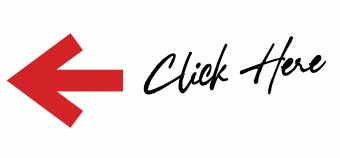Knowing the different types of knit fabrics is the key to level up your sewing skills. Read up on what you need to know about this 3rd major class of textile.
The Basic Types of Knit Fabrics To Level Up Your Skills
Sewing knit fabrics can be tricky! In fact, most beginners dread to use stretchy fabrics in their sewing projects. They find it challenging, and I think so too. In fact, when I first started sewing, I preferred to use cotton fabric. But since knit fabrics drape really well, and can make adorable shirts and fabulous maxi skirts and dresses, I knew I need to conquer my fear of sewing knitted fabrics. I've learned some very useful tricks and tips when it comes to sewing this material. I certainly find them very useful! But first, here are the three basic types of knit fabrics you need to know.

1. Jersey
Jersey is the most common type of knit fabric. To make this textile, both knit and purl stitching are put together using a single needle. Thus, this fabric is also called the single or plain knit. Among the types of knit fabrics, this one is easy to distinguish because of its unmistakable right and wrong side of fabric.
Jersey knit fabric is a common textile used for making basic T-shirts. It is also perfect for draped garments like dresses and tops.
Jersey Knit Fabric Features To Remember:
- lightweight
- not so stretchy unless the material has an amount of spandex in it
- distinct right and wrong side of the fabric
- edges curls up easily when pulled
2. Rib Knit
Rib knit or sometimes called ribbing has raised vertical textured lines. This textile is created using a double bed knitting machine that has two needles with vertical textured lines. This type of knit fabric is also easy to identify because of its vertical ribs. There are 2 basic types of rib knit fabric based on the sequence of knit and purl stitches. The 1×1 rib has a sequence of 1 knit and 1 purl stitch, while the 2×2 rib knit has 2 knit and 2 purl stitches sequence.
Since Rib knit fabric is more stretchy crosswise and lies flat on one side, this fabric is perfect for making turtleneck clothes, bottom edges of sweaters, cuffs, and necklines on clothes. It is also excellent in making mats including rugs and other home furnishings.
Rib Knit Fabric Features To Remember:
- heavier compared to Jersey
- generally very stretchy among the 3 basic types of knit fabrics, but the 1×1 rib is more stretchy than the 2×2 rib
- almost identical right and wrong side of the fabric
- not so smooth unlike Jersey knit
- edges don't curl up when pulled
3. Interlock Knit
Interlock knit is similar to rib knit. Some experts say it is a variation of ribbing because the fabric is created using 2 needles too. It also looks like 2 layers of single knit piled on top of each other. Thus, this type of knit fabric is also called double-faced rib.
When you want to sew pants, skirts, tanks, the best type of knit fabric to use is the interlock fabric.
Interlock Knit Fabric Features To Remember:
- heavier and thicker than jersey
- not too stretchy compared to Jersey
- reversible type of fabric, there's no right or wrong side of the fabric
- among the 3 basic types of knit fabrics, interlock is more stable.
Here's an informative video from Linda of Craftsy, introducing new types of knit fabrics;
As I've said, sewing knit fabric can be tricky! But now armed with the knowledge, you're on your way to conquering this challenge and coming out to be a better sewer than ever! Now, get to sewing that maxi dress you've always wanted to sew since you now know what knit fabric to use in that project!
Did this article help you? Did it answer a question you have about the types of knit fabrics? Leave us a comment below!
Want to know more tips on handling stretchy and fabric? Check out the Sewing Tips 101 for Handling Stretchy & Knit Fabric!


it’s very helpful, i can’t find information about fabric on internet. could you pls share your opinion as belew:
factory received Bulk Fabric which was lacked of stardard weight. we called out this problem to mill and they suggest turn back fabric to rewash. I want to ask for why rewash cach resolve this issue.
thank you.